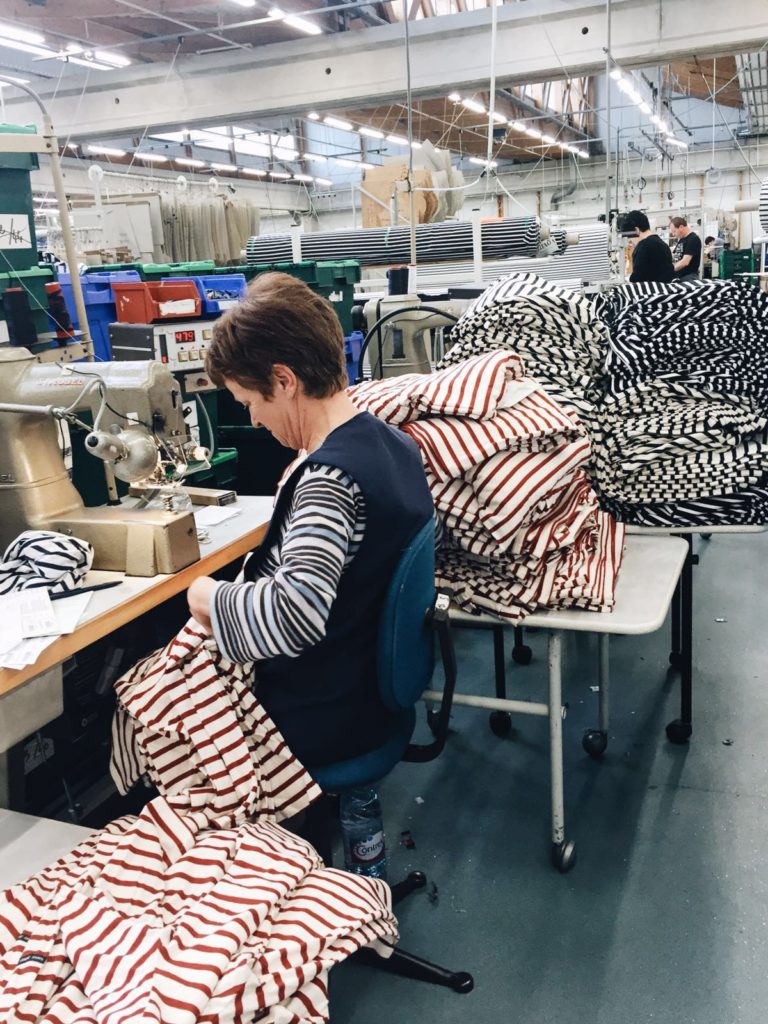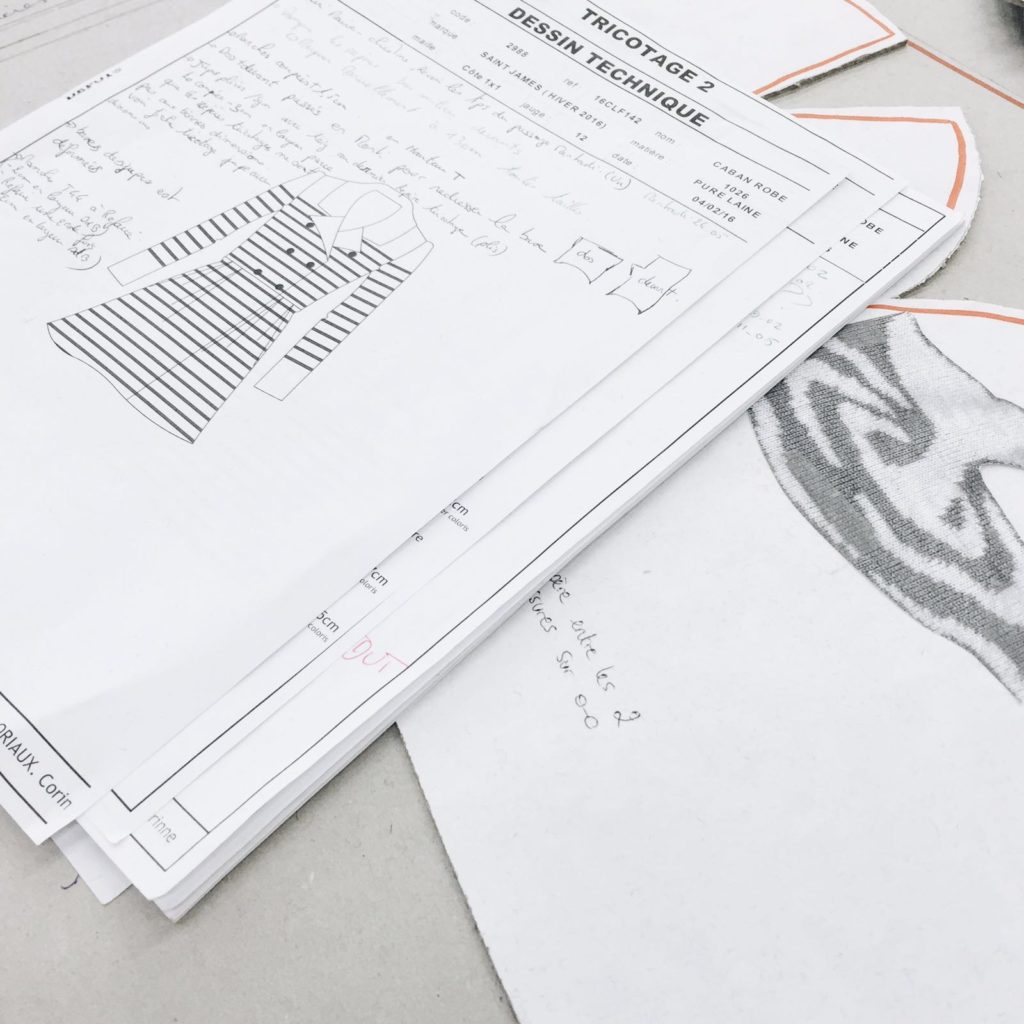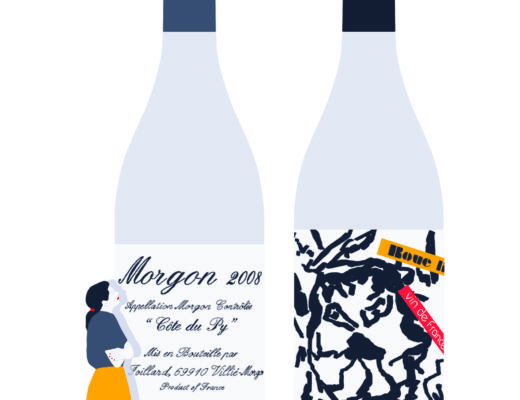Peek into the closets of most French people and you’re likely to find at least one striped sailor tee or Breton wool sweater, as much symbols of Gallic craftsmanship as of style. Chances are high the left sleeve will bear the label Saint James, the 127 year old independent French ready-to-wear brand whose durable goods and timeless nautical looks have made it a national icon spanning generations.
That the brand is experiencing two-digit growth today worldwide, amid a densely saturated market of fast fashions and copycats, gives ballast to its role as much more than a clothier to the coast’s seafaring population and the fashion conscious; it is an actor in preserving a centuries-old expertise in knitting and a champion for authenticity as more than a catchall marketing term.
The transparency of their production and sourcing, collective ownership (the brand is privately-owned and run by its 300 employees), and commitment to slow fashion output – they produce only two collections per year and each piece is designed for quality and longevity – make it the perfect exemplar of the Made in France movement, which emerged in 2012 as a reaction to the stratospheric rise in sale of foreign brands and upholds French artisanal savoir-faire. The company’s atelier has long lay quiet on a former United States air landing field in the town of Saint James, 20 kilometers from the Mont Saint-Michel in Normandy, known for its history and excellence in wool-working.

The first iteration of Breton sweaters were designed with tightly-knit local wool to protect fisherman from biting winds and water as they traveled as far as Newfoundland. This “second skin” would eventually evolve into a striped shirt and could be seen on sailors at the start of the 19th century. Following an 1858 decree, the combed cotton jersey and sweaters were officially adopted as part of the French naval uniform with strict specifications that denote a Saint-James “Chandail” shirt, even today: Twenty-one 20mm wide white stripes and twenty-one 10mm wide blue stripes; fifteen white stripes and fourteen-fifteen blue stripes on the sleeve (lore holds that the 21 stripes were meant to represent each of Napoleon’s victories over the British).
It wasn’t until 1913 when Coco Chanel herself ushered the striped marinière, as we know it today, into popular fashion, both transforming it into a stylish investment piece for seaside holidays and liberating the female form from the period’s sartorial constraints. The rest of the 20th century and the early 2000s saw the democratization of the marinière, adopted by intellectuals, artists and sailing aficionados including Audrey Hepburn, Brigitte Bardot, John Wayne, and, famously, Jean-Paul Gaultier who elevated the stripes into eveningwear.
Fashion journalist Suzy Menkes wrote that “It is a law of fashion life than when an item loses its original purpose, it becomes stylish” but function and durability are still very much integral to Saint James’s DNA – they continue to supply sailor smocks and sweaters to the French navy and army and emphasize the same virtues of quality and performance for their consumer collections. It only helped to shore up their legacy in craftsmanship when it was awarded EPV (Entreprise du Patrimoine Vivant) status by the French State, a national recognition granted to only 43 Haute-Couture and Ready-to-Wear heritage brands for traditional skills. This was in large part for the « raccoutrage » (mending) phase of their production during which impurities are removed and any flaws are mended – a skill-set that requires two years of training and that only ten people (all women) possess today.
In times of uncertainty, consumers reach for familiar, comforting symbols, expect value and unwavering performance, and, more than ever, brands with a strong sense of ethics. In France, it would be fair to say that has always been the draw of Saint James – a foil to mass consumption with reliably good products that reassure and last when nothing else does. They don’t have to join in the ubiquitous me-too-ism of corporate authenticity because the values that make it so were built into the brand from day one.

But that doesn’t mean leaving their trademark garment completely untouched. Creative collaborations with Coach, J.Crew, Claudie Pierlot, Le Slip Français and even Disney have widened the brand’s reach and Jacqueline Petipas, their Director of Collections whose roots are in Brittany and Normandy, has been hard at work incorporating a number of subtle yet important twists, from scalloped skirts, vertical and diagonal stripes and puff sleeves on cable knit sweaters to swimwear (coming in 2018), that will carry Saint James far into the future. Iconic pieces may evolve and modernize over time but Jacqueline insists the soul of the brand is unshakable, tied to the region at its very core. “My daughters wear the striped shirts that I wore as a child,” she told me. “Keeping that heritage alive will always drive what we create.”
Visit the Saint James online shop or follow their updates on Instagram!













I’m so fascinated with the brand as a Francophile, and loved learning more about it! I hope to get there someday for a tour myself. Not to mention – I simply must get the kids in their apparel. MUST.